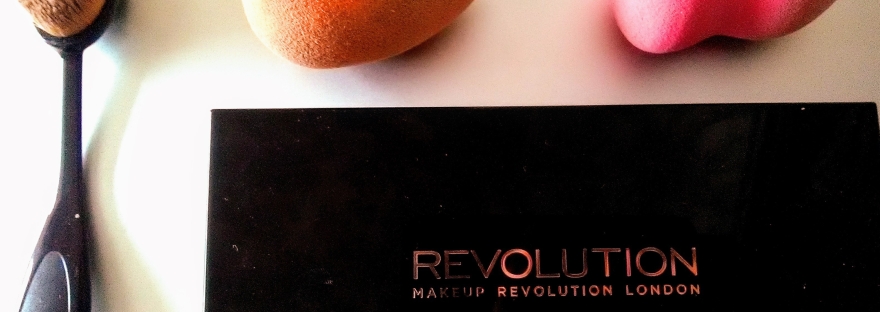For a while the thought of trying to colour correct my face was somewhat daunting. There are so many colours and since nobody gives you a manual about how to master colour correction, or makeup in general, it can be tough.
Until now.
In one of my previous blogs I reviewed a colour correction palette but I didn’t go into detail about what all the colours actually do. I’ve decided to compile a survivor’s guide to figuring out the colours, so I hope you enjoy!
This is the colour correction I have from Make Up Revolution for £6.

Clockwise for top left: Baby pink, purple, green, peach, caramel, yellow, white, orange pink
White:
Apparently there are white colour correctors, which I didn’t know! This is basically to illuminate your face, so apply it to places you want to illuminate. I find that above the eyebrow bone works well but it can be used anywhere.
Baby pink:
This has a few different uses, one way it can be used is to cover blue toned spots, but this is recommended only if you have a medium to light skin tone. Apparently it can also clear dull looking skin and counteract sallow, dark areas.
Peach:
This colour can also be used to cover blue and purple tones on your skin and normally works well on a medium skin tone. It can cover bruised skin as it is darker than the baby pink.
Orange pink:
This is like a browny toned colour correction and is the bottom left hand shade in my palette. This colour works well with dark skin, but it can also work well to cover stubborn spots, scarring and even some tattoos!
Yellow:
This colour is a good go to colour to create the illusion that you have had a great night’s sleep. Apply this under and around the eyes to cover sallow tones. A lot of colour correction shades can do this but yellow and purple work especially well to cover discolouration, especially under the eyes. This shade works well on tanned or olive skin but I have pale skin and it still does a good job.
Green:
My skin is naturally rosy, so I always struggle with this when it comes to contouring. Green colour correction covers redness, which is an absolute lifesaver for me! I always use this before putting on my make up as it leaves my skin looking flawless.
Blue:
I don’t have a blue colour corrector but there is a blue shade! This colour helps to cover minor imperfections on the skin, so its perfect for last minute breakouts before a big night out. It also adds a general radiance to the skin and, according to a bit of researching, works best with pale skin tones.
Purple:
I always use this colour, as it is AMAZING at disguising discolouration, especially under my eyes. My purple corrector is a light shade so it is also really brightening for the skin, and provides a good base for concealer. Purple helps to cancel yellow and yellow helps to cancel purple to they work well together where there is multiple discolouration.
Caramel:
This shade is in the bottom right hand corner of my palette and swatches out as a dark orangey colour. It helps to cover up dark circles and spots, like the purple, but it works best for medium to dark skin.
These are the swatches for the shades except blue:

Left to right: Purple, green, peach, orange pink, white, yellow, caramel, baby pink
Colour correctors can seem confusing at first; I had to research this blog post a lot. There a different ways you can use this colours but these are the ways I find work for me and are the most common. I find that the pinks and oranges can be used for multiple corrections, but these are the ways I’ve found. I hope you enjoyed the article, this is hopefully a good starting point for anyone who wants to try colour correction!

Interesting!
LikeLiked by 1 person
Thank you 😀
LikeLiked by 1 person
Lovely post! Xx
LikeLiked by 1 person
Aww thank you! Xx
LikeLiked by 1 person